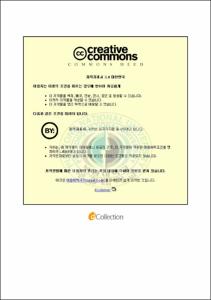면내 충돌에 의한 유공 강판의 거동 해석
- Alternative Title
- In-Plane Collision Analysis of Perforated Steel Plate
- Abstract
- The use of open-type breakwaters is more economical than that of rubble mount breakwaters in relatively deeper sea because of short construction period and low expense. In some cases, open-type plate breakwaters have plate with multi-holes; those holes role as energy dissipaters and weight reducers. Because of the multi-holes configuration stress concentration should be considered during the design process. Among several design loading conditions, a colliding load possibly from man-made vessel and other unexpected events damages the multi-perforated steel plate. In that case, the structural behavior at the multi-perforated steel plate is quite significant and is not very well understood. This study presents collision analysis of the multi-perforated steel plate.
For the study, first, four different perforation topologies(three with circles and one with square) were selected to investigate the effect hole shape on the structural response. Second, the wave force at a specific site was calculated and loaded to the steel plate as a static load. The static analysis and result(stress) were used for reference values. Third, two rigid body collidors(cube & cylinder) were applied to the steel plates for investigating the transient stress responses. For the collisions, two different angles(45° & 90°) were selected to investigate the angle effect. From the response analysis, the most effective perforated plate is recommended.
- Issued Date
- 2008
- Awarded Date
- 2008. 2
- Type
- Dissertation
- Publisher
- 부경대학교 대학원
- Alternative Author(s)
- Kang, Dong-Baek
- Affiliation
- 부경대학교 대학원
- Department
- 대학원 해양공학과
- Advisor
- 나원배
- Table Of Contents
- 1. 서론 = 1
1.1 연구배경 및 필요성 = 1
1.2 연구목적 및 내용 = 3
2. 유공판의 설치 위치 = 4
3. 유공판 및 충돌체의 유한 요소 모델 = 6
3.1 유공 강판의 유한 요소 모델 = 6
3.1.1 Case 1의 유한요소 모델 = 8
3.1.2 Case 2의 유한요소 모델 = 9
3.1.3 Case 3의 유한요소 모델 = 10
3.1.4 Case 4의 유한요소 모델 = 11
3.2 충돌체의 유한 요소 모델 = 12
3.2.1 정육면체 형상을 가진 충돌체 = 12
3.2.2 정육면체 형상을 가진 충돌체 = 13
3.3 유공판의 고유모드 = 15
4. 실험 방법 = 17
4.1 정적 해석 모델 = 17
4.2 동적 해석 모델 = 18
5. 해석 결과 = 21
5.1 Case 1 해석 결과 = 21
5.1.1 Case 1의 정적해석 결과 = 21
5.1.2 Case 1의 충돌 해석 결과(정육면체) = 22
5.1.3 Case 1의 충돌 해석 결과(원통) = 25
5.1.4 Case 1의 충돌 형상 및 변위 = 28
5.2 Case 2 해석 결과 = 30
5.2.1 Case 2의 정적해석 결과 = 30
5.2.2 Case 2의 충돌 해석 결과(정육면체) = 31
5.2.3 Case 2의 충돌 해석 결과(원통) = 34
5.2.4 Case 2의 충돌 형상 및 변위 = 37
5.3 Case 3 해석 결과 = 39
5.3.1 Case 3의 정적해석 결과 = 39
5.3.2 Case 3의 충돌 해석 결과(정육면체) = 40
5.3.3 Case 3의 충돌 해석 결과(원통) = 43
5.3.4 Case 3의 충돌 형상 및 변위 = 46
5.4 Case 4 해석 결과 = 48
5.4.1 Case 4의 정적해석 결과 = 48
5.4.2 Case 4의 충돌 해석 결과(정육면체) = 49
5.4.3 Case 4의 충돌 해석 결과(원통) = 52
5.4.4 Case 4의 충돌 형상 및 변위 = 55
5.5 결과 비교 분석 = 57
5.5.1 정적해석 결과 비교 = 57
5.5.2 충돌해석 결과 비교 = 58
6. 요약 및 결론 = 61
참고 문헌 = 63
Appendix = 65
A. 정하중 모델 Input Data = 66
B. 충돌하중 모델 Input Data = 79
- Degree
- Master
- Files in This Item:
-
-
Download
 면내 충돌에 의한 유공 강판의 거동 해석.pdf
기타 데이터 / 9.16 MB / Adobe PDF
면내 충돌에 의한 유공 강판의 거동 해석.pdf
기타 데이터 / 9.16 MB / Adobe PDF
-
Items in Repository are protected by copyright, with all rights reserved, unless otherwise indicated.